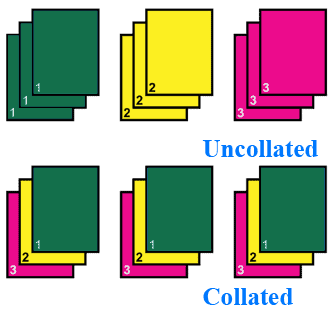Essential Steps in a Comprehensive Test Automation Guide
AI Overview:
A comprehensive test automation strategy helps IT teams reduce errors, speed up release cycles, and improve overall system reliability. This article explains how IT professionals choose the right tools, design strong automation frameworks, and measure success using key performance indicators. It also highlights common challenges—such as tool complexity, resistance to change, and maintaining test coverage—and offers practical ways to overcome them. IT leaders and business owners will learn how automation streamlines workflows, enhances collaboration, and creates more efficient, scalable operations.
A Comprehensive Test Automation Strategy for IT Teams
Are you tired of delays and errors from outdated testing methods? This article explains a comprehensive test automation strategy for IT teams. It outlines the key role of IT professionals in test automation, discusses how to choose effective tools, and measures success while addressing common challenges. Business owners and IT leaders will learn how to improve efficiency and reduce risk using an effective test automation strategy.
What Is a Comprehensive Test Automation Strategy?

A comprehensive test automation strategy provides clear guidance for IT teams to incorporate automation throughout their processes. It promotes seamless integration of acceptance testing to ensure that every user receives a reliable service. The strategy also supports efficient management of database operations.
The approach emphasizes a structured framework for automation that reduces testing errors and enhances system performance. It involves the careful planning of acceptance testing procedures aimed at improving user satisfaction. This framework allows for a smooth flow of data across the database.
The strategy builds a robust community among IT professionals, encouraging knowledge sharing and collaborative problem-solving. It supports the constant refinement of automation practices to align with evolving project goals. Inclusion of acceptance testing reinforces trust among users and contributes to database reliability.
This comprehensive plan benefits businesses by streamlining workflows and reducing manual tasks. Automation techniques and acceptance testing are integrated to create systems that are efficient and user-friendly. The strategy ensures that the database management remains secure and highly responsive to business needs.
Defining the Role of IT Teams in Test Automation

This section covers the essential skills IT teams require for effective test automation, focusing on backup strategies, reliable software, thorough audit processes, and scalable architecture. It details how professionals collaborate during digital transformation initiatives to improve operations and streamline automation practices, offering practical insights into enhancing team performance.
Key Skills Required for IT Teams
The expertise of IT teams in an effective test automation strategy includes a solid understanding of programming language fundamentals and markup language syntax. Proficiency in these areas supports dependable automation, ensuring that both the internet of things and traditional platforms meet governance standards, which results in optimized performance for the end user.
IT professionals must also be skilled in managing automation frameworks, ensuring that proper governance policies are in place. Their familiarity with programming language techniques and markup language intricacies aids in developing reliable systems that serve the internet of things and address the demands of the end user.
How IT Teams Collaborate on Automation
IT teams work closely with administrators and developers to integrate tools such as soapui to automate testing and boost code coverage effectively. This collaborative environment improves business processes while directly enhancing the customer experience.
Professionals combine their expertise in automation frameworks and governance to streamline operations and refine testing practices. The teamwork supports practical solutions that optimize code coverage and elevate both system efficiency and the level of service provided.
Benefits of Implementing Test Automation

The strategy boosts accuracy and efficiency by integrating continuous testing, streamlining legacy system upgrades, and api testing. It also shortens time to market while bolstering team collaboration across IT service management platforms and diverse operating system environments. This brief review outlines practical benefits and prepares for a deeper look into each enhancement area.
Enhancing Accuracy and Efficiency
The test automation strategy boosts accuracy by integrating innovation and automation frameworks that streamline application management while adhering to budget constraints. This approach allows IT teams to implement systems with high scalability, leading to measurable gains in operational efficiency.
Increased efficiency meets productivity when a virtual team collaborates on automated testing, ensuring precise results and consistent performance. By focusing on innovation and scalability, the strategy supports a robust application management system that optimizes resources and mitigates potential operational risks.
Reducing Time to Market
The strategy shortens release cycles by incorporating continuous integration procedures that enable rapid feedback and timely adjustments within the technology landscape. This method optimizes resource allocation, allowing teams to run robotframework test and smoke sessions efficiently, which contributes to faster delivery times.
Implementing automated test practices reduces manual delays, leading to accelerated deployment schedules. By integrating continuous integration steps and prioritizing resource allocation, IT teams can rely on robotframework test and smoke practices to ensure a streamlined pathway from development to market launch.
Improving Team Collaboration
The strategy fosters strong collaboration among IT teams by streamlining communication and reinforcing accountability in functional testing. The integration of automation tools in an MSP environment reinforces efficiency and supports smoother operations across the supply chain and server management.
Team members share expertise and best practices while ensuring high standards in functional testing and server reliability. This approach contributes to a cohesive environment where operational efficiency advances and challenges are promptly addressed within the supply chain framework.
Choosing the Right Tools for Test Automation
IT teams assess popular automation tools by examining tool features and compatibility. Engineers ensure that passwords and computer data storage are protected as critical assets. This section introduces practical evaluations and insights that inform the choice of an effective tool.
Popular Automation Tools in the Market
The market offers a range of a robust test automation tool designed to streamline workflows within IT teams. The design of these tools ensures that features such as data at rest security and reliability engineering are integral, while telecommunications support functions help maintain seamless operational performance.
Expert IT professionals favor automation tools that prioritize strong design elements and the handling of data at rest to guarantee system reliability. Emphasis on reliability engineering and telecommunications capacities in these tools enables teams to achieve efficient test automation and improved overall performance.
Evaluating Tool Features and Compatibility
Evaluating tool features and compatibility involves verifying that the chosen solution supports continuous delivery frameworks and integrates seamlessly with platforms such as oracle. IT professionals ensure that the application meets specific performance requirements and accommodates web application developments, providing clear advantages to business teams.
Expert evaluations focus on how effectively the tool aligns with existing systems to boost productivity and mitigate risks during upgrades. Technical leaders check that the system maintains smooth operations during continuous delivery while offering compatibility with oracle-based infrastructures, ultimately benefiting business teams involved in critical application workflows.
Designing Your Test Automation Framework

Establishing clear standards and guidelines and incorporating best practices in automation ensures robust frameworks for IT teams. This approach ties in effective incident management, secure data protocols, reliable antivirus software, and closer collaboration with managed service providers while aligning with devops principles. These areas will be further detailed in the following sections.
Establishing Standards and Guidelines
The establishment of clear standards and guidelines provides a reliable interface for IT teams managing their it infrastructure. It ensures that every element, from mutation testing to network security protocols, falls within the defined scope of operations, offering a practical framework for efficient automation processes.
Consistent guidelines support the development of robust systems, facilitating smoother interactions across various platforms within the it infrastructure. Practical examples of incorporating mutation testing and network security measures allow teams to refine their interface and extend the scope of their test automation framework with precision.
Incorporating Best Practices in Automation
The strategic integration of best practices in automation requires consistent application of practical skill and service desk principles that empower IT teams. Incorporating proven methodologies such as tosca test ensures that test automation frameworks remain robust, secure, and tailored to meet specific project needs, similar to maintaining essential home appliance performance through practical leadership and clear protocols.
IT teams with strong expertise implement best practices in automation to optimize daily operations and promote continuous improvement. By applying tosca test effectively alongside reliable service desk support, these teams enhance overall efficiency and provide a dependable framework that addresses challenges and reinforces leadership through focused skill development.
Measuring the Success of Your Test Automation Strategy
The success of test automation is measured by tracking key performance indicators like customer relationship management metrics and application software quality. Monitoring the goal through tools such as ui test and access control ensures that teams remain focused on continuous improvement and feedback loops. This section covers practical insight on these critical measurement areas essential for IT teams.
Key Performance Indicators to Track
IT professionals use key performance indicators such as quality assurance and team logic it reviews to assess operational success in test automation. These indicators support a systematic methodology that captures data center analytics and emphasizes measurable knowledge to drive continuous process improvement.
Effective monitoring relies on integrating quality assurance with robust metrics that provide actionable insights. Leveraging team logic it reviews and detailed data center reports, IT teams gain knowledge that refines their methodology and underpins long-term operational excellence.
Continuous Improvement and Feedback Loops
Continuous improvement relies on a steady flow of feedback loops crafted through regular automated test routines and well-structured smoke testing. The process is strengthened by adherence to sound practices and rigorous configuration management, ensuring that the system meets established regulation and adapts to evolving technical needs.
IT teams use detailed feedback and real-world examples to refine their operations, recognizing that periodic adjustments help meet benchmarks and control quality. This shift toward active monitoring supports actionable improvements and confirms that each automated test contributes to a smarter, more efficient configuration management approach aligned with regulation.
Common Challenges Faced by IT Teams in Test Automation

Addressing resistance to change, managing tool complexity, and ensuring robust test coverage are core challenges in every comprehensive test automation strategy. IT teams, utilizing scrum frameworks and continuous feedback, refine workflows to overcome resistance, master learning curves, and maintain quality. Such approaches drive streamlined systems and support effective marketing initiatives, offering practical insights into these common challenges.
Addressing Resistance to Change
Resistance to change poses a significant challenge for an it team when implementing a comprehensive test automation strategy. Professionals overcome this barrier by utilizing the test automation pyramid to demonstrate the value of layered testing and by integrating analytics to present clear evidence of progress, which supports effective itsm practices and improved asset management.
Establishing transparent communication channels and detailed planning helps the it team address resistance and build trust among stakeholders. Practical examples, such as pilot initiatives that include real-time analytics, demonstrate how structured frameworks can streamline processes while ensuring that itsm guidelines and rigorous asset management practices are maintained.
Managing Tool Complexity and Learning Curves
IT teams face challenges with tool complexity when integrating systems such as cloud computing solutions and artificial intelligence modules, which often require a deep understanding of scripting language frameworks. The steep learning curve can increase cost and slow down problem solving, so teams benefit from targeted training and hands-on guidance to streamline their processes.
Specialized training sessions in scripting language techniques and support for artificial intelligence integrations can help teams manage complex environments. Practical examples from cloud computing implementations reveal that addressing cost and problem solving with clear, step-by-step approaches minimizes learning curve obstacles and improves overall automation efficiency.
Ensuring Test Coverage and Quality
IT teams must ensure comprehensive test coverage and quality by streamlining each test case to address various scenarios while reinforcing essential collaboration among team members. Practical guidance through education and hands-on examples helps establish metrics that tie back to improving customer satisfaction and efficient data warehouse management.
Effective strategies include maintaining rigorous test case documentation and continuous collaboration that enables teams to quickly address any quality gaps. This approach promotes stronger alignment between testing efforts and customer feedback, supporting a robust framework that mitigates risk and drives overall process improvement.
Conclusion
A comprehensive test automation strategy guides IT teams to integrate and optimize acceptance testing with precision. It empowers professionals to refine processes, manage database operations, and streamline workflows. IT teams use this approach to achieve scalability, reduce errors, and boost operational efficiency. The strategy ultimately reinforces trust among users while consistently improving system performance.










